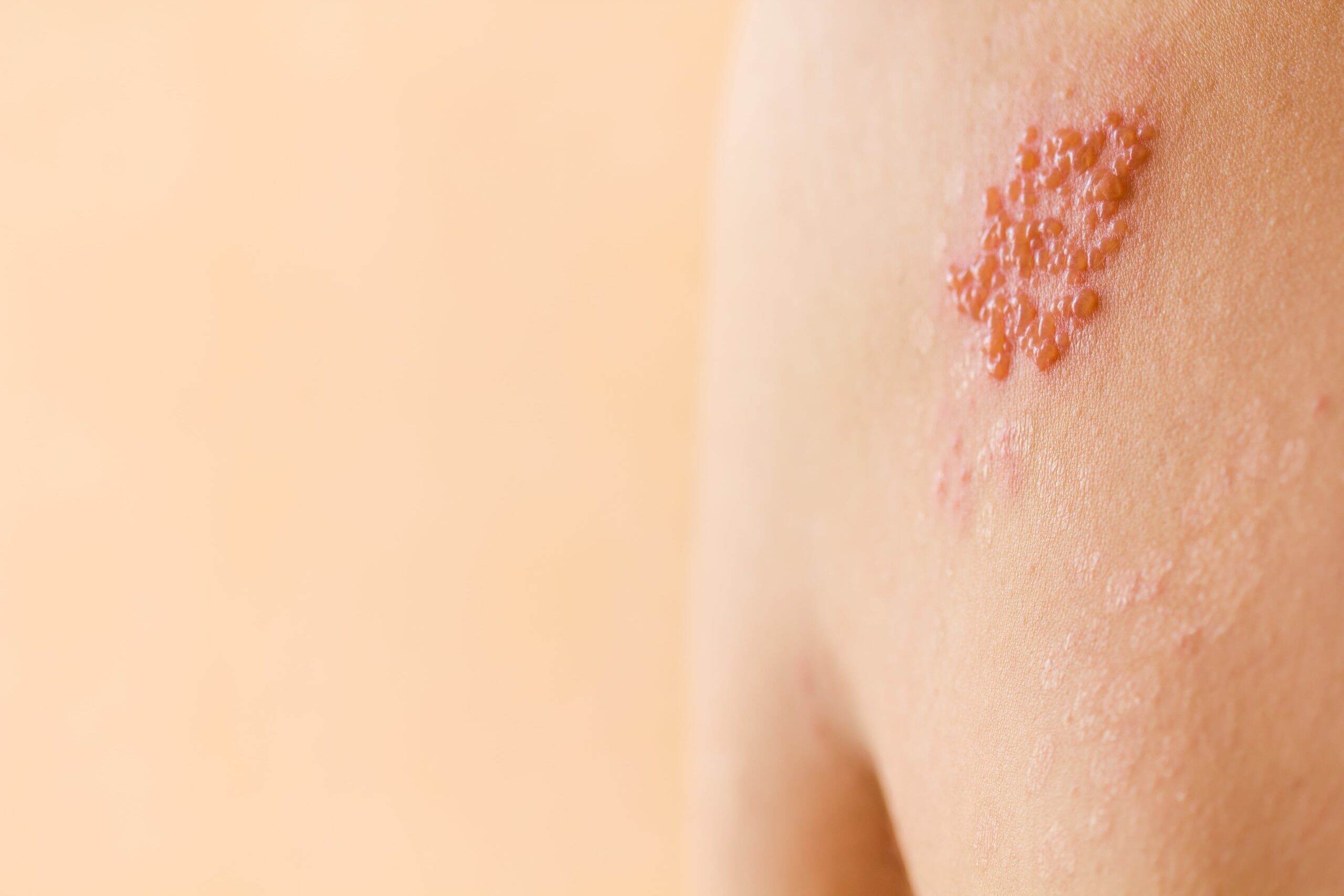Shingles

If you think you have shingles, see a dermatologist provider as soon as possible. Although shingles can clear up on their own within a few weeks, the best way to treat them is with a dermatologist’s help.
What are shingles?
Shingles are viral infections that appear on the skin in the form of rashes. Shingles are also referred to as herpes zoster and are characterized by painful, blistering rashes. The condition is caused when the chickenpox virus (varicella-zoster virus) is reactivated many years later.
Shingles are, therefore, usually seen in people who have previously had the chickenpox virus during their lives. After you’ve had chickenpox, the virus may lie inactive in nerve tissue near your spinal cord and brain and reactivate as shingles later.
Shingles rashes may occur anywhere on your body, but they tend to extend in patterns located by the nerves and occur on one side of the body. The most common areas on the skin affected by shingles are the abdomen, face, back, chest, and buttocks. The red, itchy patches that develop across these areas then transform into small blisters and can resemble chickenpox symptoms.
How do you get shingles?
Shingles are primarily seen in older adults and those with weakened immune systems caused by injury, certain medications, stress, or other issues. Most of those afflicted with shingles eventually get better and do not get it again. However, it is possible to get shingles more than once in your lifetime. When the virus is reactivated, it does not cause a recurrence of chickenpox; only the shingles rashes appear.
Those who may be at risk from shingles include:
- Older adults (typically over 50 years of age)
- People with diseases such as cancer or HIV
- Those who have had an organ transplant
- Those who are unable to fight off infection easily due to immune deficiencies or stress
Are shingles contagious?
Shingles are generally not contagious. It is not possible to contract shingles from another person who has them. However, there is a small risk that someone with shingles rashes can spread the virus to someone who has never had chickenpox or the vaccine for chickenpox.
What are the symptoms of Shingles?
Shingles symptoms can occur in stages, with the first symptoms being headaches, muscular aches, or sensitivity to light. Some people describe shingles symptoms as feeling like they caught the flu but with no fever. Other symptoms of shingles include:
- Dizziness
- Fatigue
- Anxiety
- Stabbing Pain in the Region With the Shingles Rash
What treatments are available for shingles?
As soon as you think you have shingles, make an appointment to see a dermatologist. Although shingles are not a life-threatening condition, you can develop complications from shingles without treatment. Additionally, the pain and discomfort from shingles can last much longer if no medication is taken. If you have shingles on your face, consult a doctor immediately because shingles near the eye area can cause permanent damage to the eyes.
Before treatment, in some cases your dermatologist may scrape the blisters on your skin to get a sample and then send it to a lab to verify that you have shingles.
Treatment for shingles can include anti-viral medications, steroids, and pain medications. The quicker you can begin a prescription of anti-viral medication, the better off your prognosis will be.
Topical antibiotic creams can also be applied in some cases to rashes to help prevent infections. In some cases, pain can persist even after rashes have disappeared. This is known as postherpetic neuralgia or PHN. If you are diagnosed with PHN, a doctor might prescribe medications such as painkillers, anti-depressants, and topical anesthetics to help you cope with the pain.
The best treatments for shingles include:
- Antiviral drugs, such as Famvir, Valtrex, and Zovirax, can help with the pain, expedite the healing process, treat the rash and reduce any complications with Shingles.
- Pain-reducers, such as numbing agents, narcotic medications, Capsaicin cream, anticonvulsants, local anesthetics, and injections of steroids, are also effective treatments.
Shingles Treatment Near You in NY, NJ, PA, CT, FL, IL, MN and MO
If you think you might have shingles, please consult a dermatologist immediately. Our experienced dermatology providers can help you with shingles treatment to be pain-free and return to health more quickly.
For appointments, please call Schweiger Dermatology Group at (844) DERM-DOC. To find a location near you, check out our location pages.
